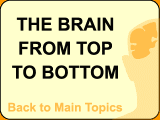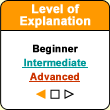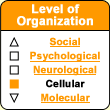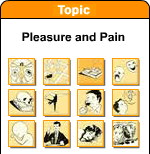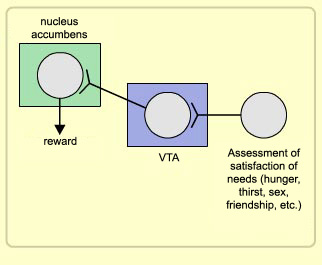The experiment that revealed the existence of the reward circuit in the 1950s was the result of the work of two researchers, Olds and Milner. This experiment has been repeated several times since, with all sorts of variations, but it basically works as follows.
Electrodes are implanted in the nucleus accumbens of a rat’s brain. When the rat presses a lever, it stimulates its own nucleus accumbens. Once the rat discovers the trick, it keeps stimulating itself endlessly, without even stopping to eat. The direct stimulation of this circuit is so powerful that the animal forgets its own basic needs.
This is exactly what happens when someone takes drugs.
|
